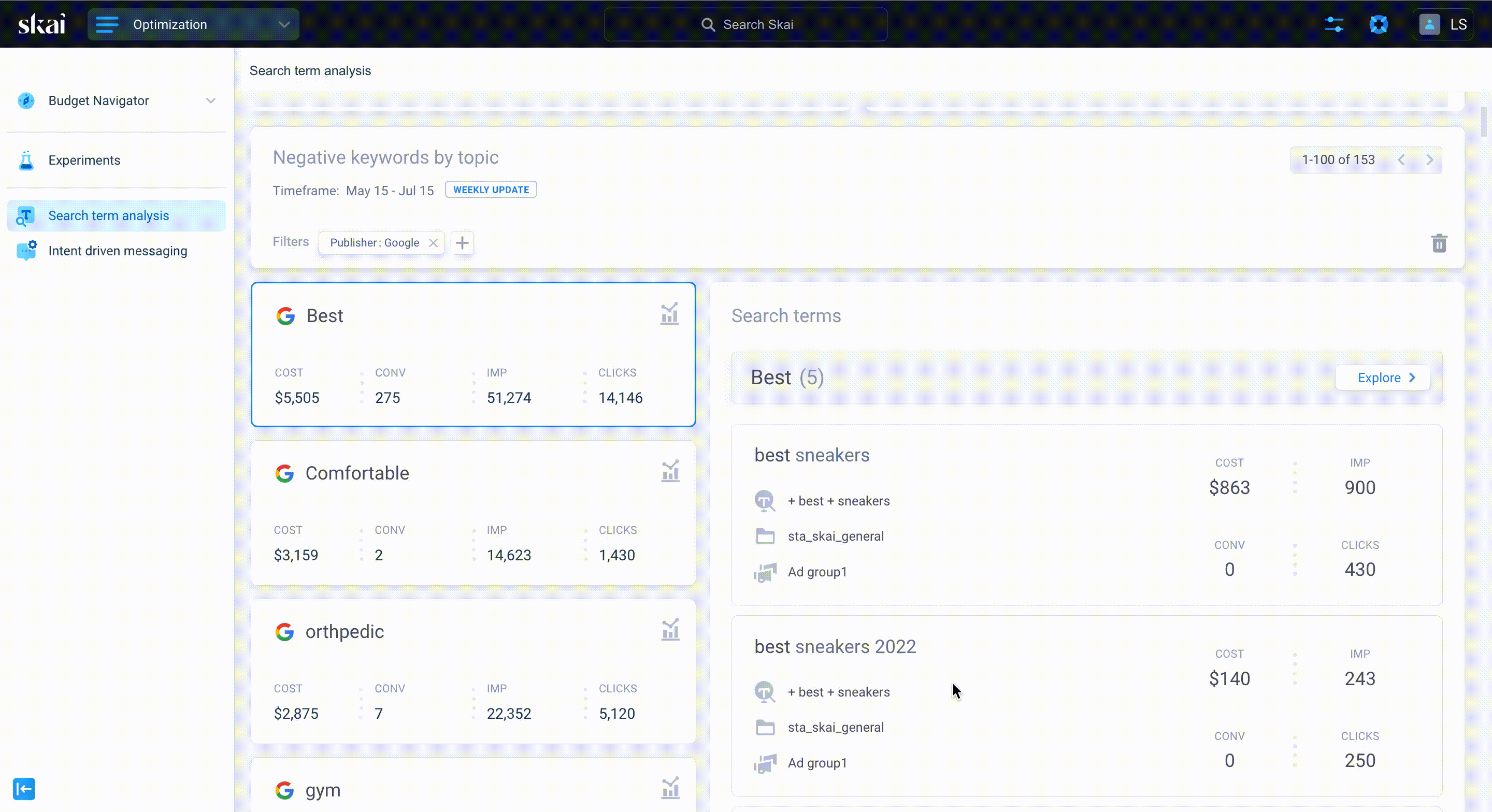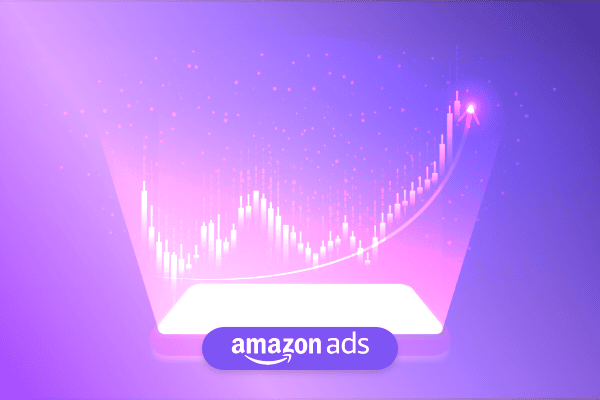Summary
What are your thoughts on Google Broad Match? Whether you’re a fan or not, Google has made some major enhancements in the last few years and part of it’s AI-powered search initiative. February is Broad Match Month and a time for search marketers to give Broad Match a second look. Test it this month to see what it can do for your paid search program.
There may not be a more polarizing topic in search engine marketing than when and how to use Broad Match. Some practitioners stay from it, while most use it sparingly and with many negative keywords loaded to ensure it doesn’t go off the rails.
But it’s a new era of SEM. If you’re a search marketer, you would have to be literally living in a cave last year not to have heard Google bang the drum about the changes they’ve made to Broad Match.
No matter how you feel about Broad Match, it’s time to test Broad Match again and see if the upgrades Google has made can provide value to your performance goals.
That’s why February 2024 is BROAD MATCH MONTH. Test and experiment with Broad Match this month so that you have an updated, data-driven point-of-view on this tactic.
So far, the feedback from Skai clients who have tested it has been tremendous.
What have you seen?
Broad Match fits into Google’s AI-powered search
The enhanced Broad Match is part of Google’s core new messaging about AI-powered search. AI-powered search is not a new product but rather a best-practice SEM approach of using three core Google AI-powered components as the foundation of your search campaigns:
- Broad Match. Now more intelligent than ever, the enhanced Broad Match gets you into more auctions by matching user queries to advertisers beyond the limits of your keyword lists. It understands the semantic intent of the query to get you into more ad auctions and more of the right ad auctions for your business.
- Smart Bidding. With value-based bidding, Google’s AI predicts the value of the user to your designated campaign objective. So, not only will it bid higher on valuable users, but it also helps to mitigate Broad Match by bidding down users who it deems less valuable. I think of it as an extra layer to Broad Match.
- Responsive Search Ads (RSAs). Do you remember the first 20 years of SEM where Google recommended 3-5 ads per ad group to find the best-performing one? Well, when you equip Google with 15 headlines/4 descriptions, Google’s AI has 43,680 different ad combinations to test. RSAs also help impact your auction-time Ad Rank by increasing Quality Scores with better relevance.
To recap:
- Broad Match gets you into more quality auctions
- Smart Bidding chooses the right bid
- RSAs help you increase engagement
Of course, all three of these three components are not just powered by AI but also the robust and unique signals Google has based on everything it knows about the user, the experience of seeing 8.5 billion searches a day, and a deep bench of signals Google uses to optimize performance.
And, let’s not forget that these decisions are all being made in real-time — at the moment the auction occurs. Within milliseconds, Google’s technology is able to match ads to user queries, put forth the best RSA ad combination, and pick the perfect bid. This matters because there are just too many factors and forces that change the market landscape in ways that mere mortals could never track.
Use February 2024 to test Broad Match
I think I went from skeptical about Broad Match to interested in testing it when I watched this Google video of search marketers revealing their skepticism about Broad Match but then being won over after they did their own experiments.
This quote, especially — from paid search expert Natalie Barreda — made me reconsider Broad Match:
Over time, I saw that the development of automated bidding improved with all the different signals that you’re feeding in. And then it became the question of. like, if I trusted to manage my money, why do I not trust it as much to manage the queries that I’m showing on?
Natalie Barreda, Director of Paid Media, Trupanion
Best Practice when testing Broad Match
Here are just a few tips to consider when testing Broad Match.
Note – there are more resources at the end of this article.
- Organize your ad groups by a common theme. While this has always been a Google Search Ads best practice, the new AI-powered search news you to structure your ad groups this way to understand your business better and match you better.
- Make sure your other components are fantastic. Broad Match can get you into more and better auctions, but your campaigns won’t improve unless your ads and landing pages are stellar.
- Be mindful of negative targeting. Be mindful of negative keywords that may have accumulated over the years. Work with negative keyword targeting regularly, choosing carefully to make sure they’re used only for queries you don’t want ads to match to. Remember, it’s a whole new world of Search right now. Sometimes, you may want to take away all of your negative terms and let the AI do its thing.
- Consider brand restrictions in Broad Match. Some marketers need to match their campaigns only to traffic for specific brands. With brand restrictions in Broad Match, Google AI can restrict traffic to select brands and related products and services.
How Skai can help
We’ve been helping marketers maximize their paid search programs through innovative technology solutions since 2006. Within our entire capability set, here are three powerful AI-powered Skai tools that will help you master Broad Match:
- Search Term Analysis. Easily find wasteful matches.
- Intent-Driven Messaging. Flags valuable keywords that aren’t in your ad copy.
- Destination Optimization. Discovers your most valuable landing pages.

Skai’s Search Term Analysis saves time and money by showing you where you’re wasting your budget with irrelevant ad matching. It helps you make quick and impactful optimizations, ensuring your customers find you when they search for you.
Skai’s machine learning algorithms scour Google’s search term report and find low-performing query trends. It then displays those queries in an intuitive, easy-to-use dashboard with the corresponding performance data so marketers have the full context of how big a problem they have. In a snap, practitioners can add negative keywords to their campaigns to ensure those queries no longer match them. In minutes, search marketers can accomplish what may have taken hours before.
Intent-Driven Messaging (IDM) analyzes your paid search program for high-intent keywords not included in your search ads and recommends their inclusion in the ad copy. In turn, ads reflect consumer search intent better, driving higher engagement and efficiency.
Through a new integration with OpenAI, IDM will help you save hours of time by providing complete, ready-to-use ad headlines created by generative AI at the click of a button.
Destination Optimization is a machine learning tool that helps businesses improve their Google Ads campaigns by surfacing the highest-performing landing page by topic. It works by collecting data from your Search Term Report for the terms your customers are using to find your website, as well as the landing pages they are being taken to. This is done by looking at the customer search intent behind the search terms.
Once the search terms have been grouped into topics, Destination Optimization aggregates each landing page’s performance data. It recommends the one with the highest conversion rate to address various challenges.
More resources to make your Broad Match Month a success
A few weeks ago, I hosted a webinar with Rakuten and Google on this topic. In that event, Google’s Sr. Product Manager, Oliver Kiderle, revealed some amazing insights into Broad Match that I think will answer most questions you may have. One particularly interesting portion was when he talked about how the AI prioritizes matches in a Broad Match world. Very interesting!
View the free, no registration required, on-demand recording.
Other resources to help:
- Google’s How to Think Differently About Search video was played at the beginning of the webinar.
- The PDF Oliver shared via a QR code is Unlock the Power of Search.
- Oliver’s Meet the Experts deep dive webinar into Broad Match. It is a fantastic resource if you want to understand the nitty-gritty details.
- This is a fantastic article at ThinkWithGoogle about the broader (pun intended) work on AI at Google, with some great info on Broad Match.
- Google’s Ads Help article, Your Guide to Broad Match.
Okay, enough reading…GO TEST
This article is not meant to change your mind about Broad Match but just give you enough food for thought to test it.
Use February (the shortest month of the year) to test Broad Match. You may find some valuable insights to help you beat your performance goals this year.
Good luck & Godspeed!







